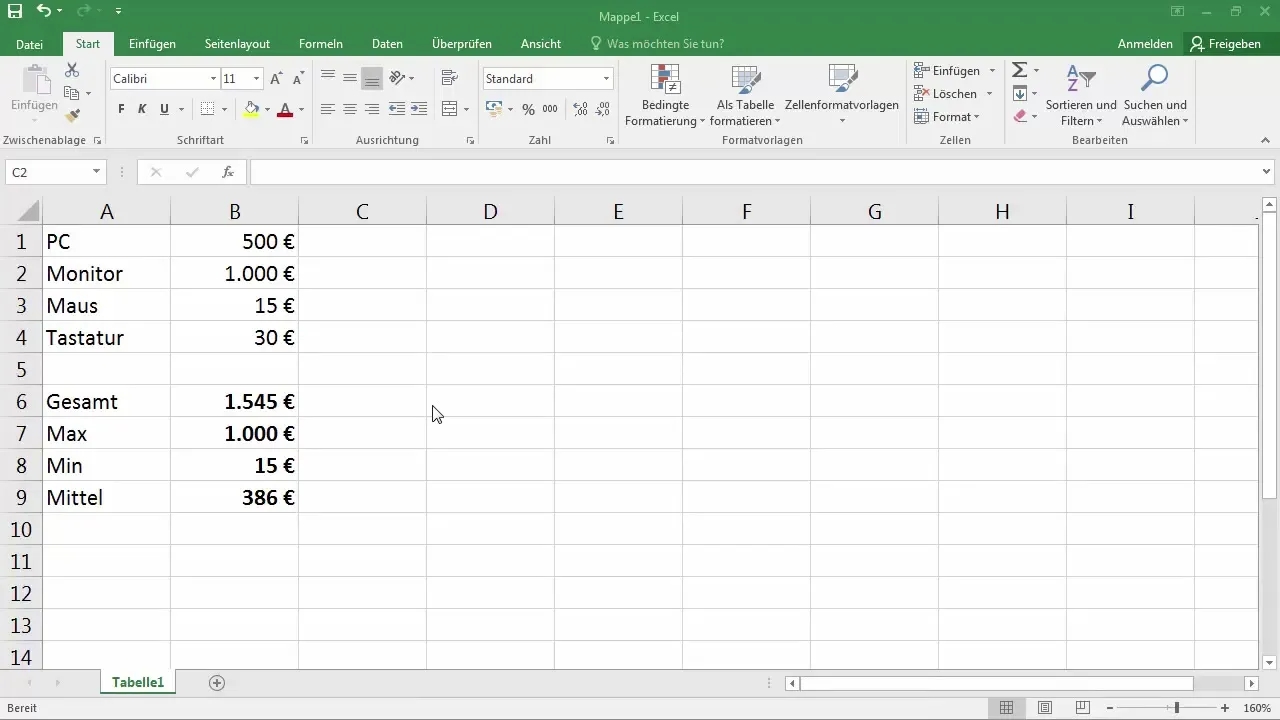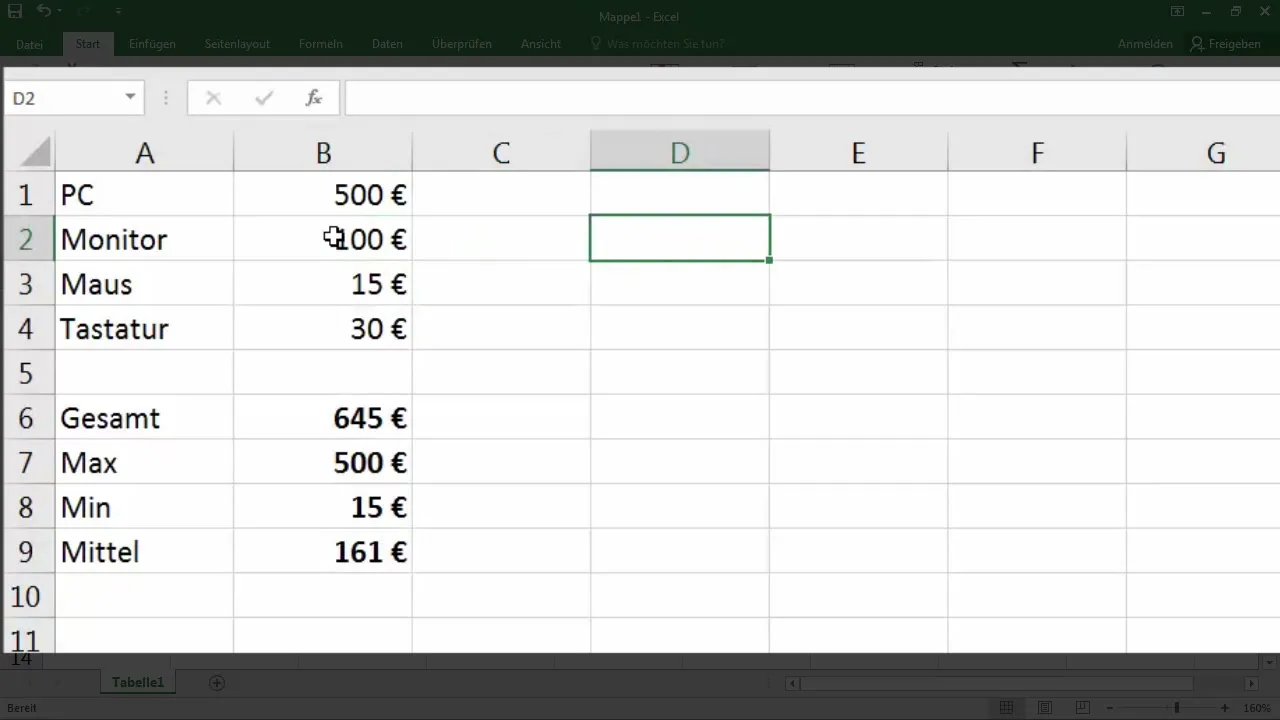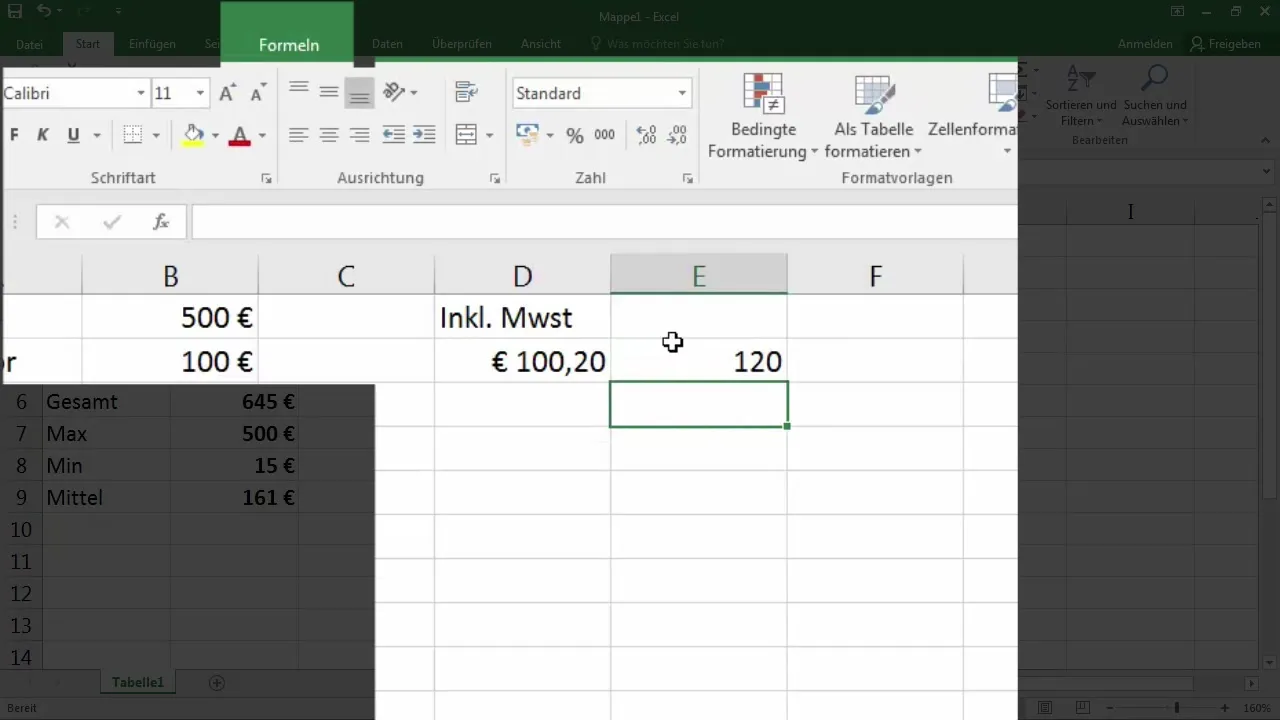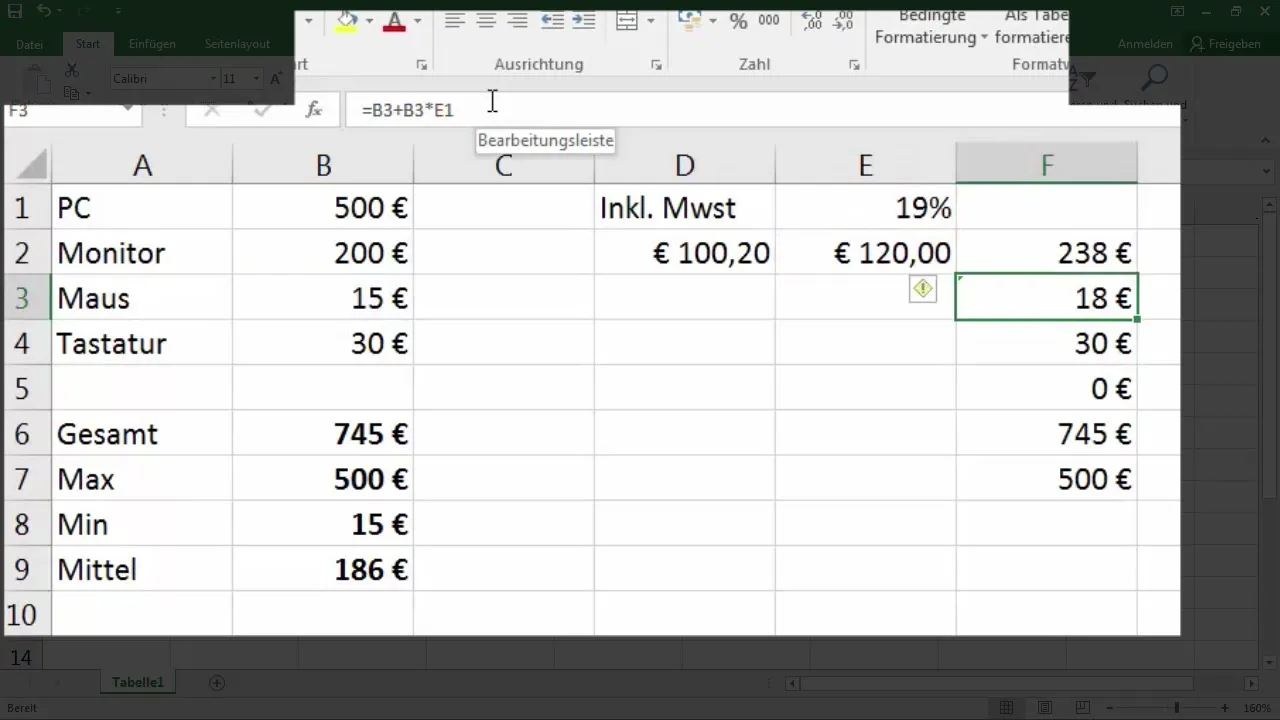Whether creating invoices or working with statistics, calculating percentages is one of the most important tools in Excel. However, there are often pitfalls to master. In this guide, you will learn how to perform effective percentage calculations in Excel with the right mathematical formula.
Key Insights
- Excel processes percentage values differently than calculators.
- Mathematical formulas are crucial for accurate calculations.
- References in Excel make it easier to edit and adjust values.
Step 1: Understand the Basics
When working with Excel, it is essential to understand the fundamental differences between Excel and a calculator. In Excel, you must use mathematically correct formulas to achieve precise results.

To illustrate this, take the example of the price of a monitor, which you set at 100 €. If you now want to calculate 20% on it, you want to ensure that you follow the correct steps.

Step 2: Apply the Correct Formula
To calculate 20% of 100 €, the correct formula in Excel is:
= Amount + (Amount * Percentage)
In your case, it looks like this:
= 100 + (100 * 20%)
Confirm this with the Enter key to obtain the result of 120 €.

Step 3: Adjust Value and Percentage
Now you can change the base value and the percentage. If you change the monitor price in Excel from 100 € to 200 €:
- Change the value in the cell where you defined the amount.
- Excel will automatically calculate the new percentage, as long as you have set up the formula correctly.
If you now enter 200 € in the corresponding cell, you should arrive at 240 €.
Step 4: Use Dynamic References
To make the calculation dynamic, link the percentage in another cell. For example, you can enter the percentage in cell E1 and then adjust the formula:
= B2 + (B2 * E1)
If you now enter 20% in E1, Excel will automatically calculate the value.
These adjustments are extremely useful in situations where you frequently change values, such as when creating invoices or statistics.
Step 5: Fix Correct References
A common challenge is avoiding mistakes in references. If you want to drag the formula down, ensure that the source of the percentage remains fixed. For this, you must use the dollar sign ($).
For example, the formula could look like this:
= B2 + (B2 * $E$1)
This way, the reference to E1 remains constant while the other references adjust when dragging the formula down.

Now you have successfully implemented a dynamic calculation that allows you to manage your data efficiently and easily.
Step 6: Avoid Errors
Make sure you always use the correct references in your formulas. If you land in the wrong place, you can easily adjust this. Especially with long lists, misunderstandings can quickly arise, leading to incorrect calculations.
If you are uncertain, regularly check your formulas and test them by varying your input values.
Summary
Calculating percentages in Excel requires some practice and understanding of the correct formulas and references. With this guide, you can ensure that you follow the mathematically correct steps and thus work efficiently.
Frequently Asked Questions
How do I enter a percentage in Excel?You can directly enter a percentage in the cell and work with a "%" at the end.
Why are my results not correct?Check your formula and the references used. Ensure that everything is entered correctly.
How can I fix references?Add a dollar sign ($) to fix the reference, e.g., $E$1.
Can I use multiple percentage values in different cells?Yes, you can use a separate cell for each percentage and reference them in your formulas.
Where can I find additional settings for currencies?You can select the currency option in the number formats in the Excel menu.


